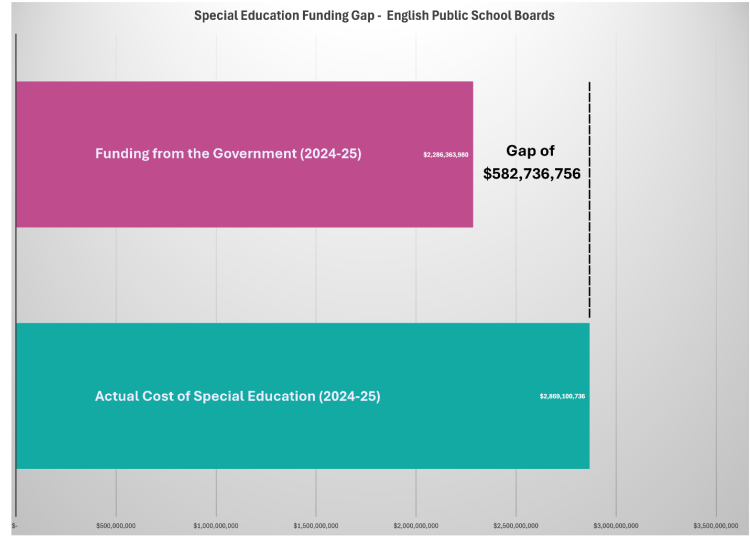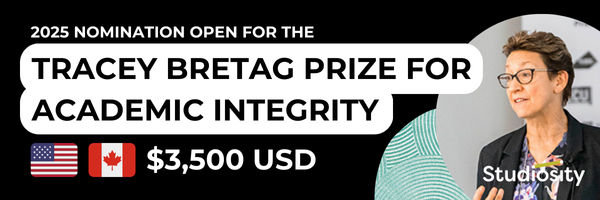After years of education funding increases that lagged inflation, this year's 2.64% increase marks a modest step in the right direction. For the second year in a row, education funding in Ontario is projected to increase above the rate of inflation.
We note the government's growing investments in cybersecurity, student transportation, and temporary pupil accommodations such as portables, which have been areas of significant concern for school boards across the province.
Following the release of last year's Core Education Funding, the Ontario Public School Boards' Association (OPSBA) described the projected 2024-25 funding levels as an increase below inflation. However, actual spending at the end of the fiscal year was higher than the projected amount, with an increase from the per pupil amount of $13,835 to an actual amount of $14,186 - an amount that exceeds inflation. This was mostly due to increased school board spending following the implementation of central collective bargaining agreements.
"While this year and last year represent a step in the right direction, the challenging reality is that funding still falls short of closing the gap that has developed since 2018," said OPSBA President Kathleen Woodcock. "We are also concerned by projections in the Budget document that suggest education funding will plateau in the years ahead. This would be a step backward at a time when the needs of students, the demands on school boards, and cost pressures continue to rise."
According to the Ministry of Education's data (see chart below), per-pupil funding is set to rise from $14,186 in 2024-25 to $14,560 in 2025-26. That's an increase of $374, or 2.64%.
Back in 2018, when the current government was first elected, schools were receiving $12,282 for each student. The amount planned for 2025-26 is $14,560 per student. But if adjusted to match 2018 money values, it's actually only worth $11,878. That means there's still a gap of $404 per student compared to 2018, although that's better than the $776 gap we saw last year.
Still, with nearly 1.4 million students in Ontario's English public schools, had funding kept pace with inflation from 2018, there would be approximately $693 million more in the English public system today.

Special Education
Special Education funding is among the most pressing funding challenges facing school boards. Every single one of our member boards is experiencing such increased special education demand that they are forced to spend significantly more ($582.7 million in 2024-25, see chart below) on special education than the amount that they are funded for from the government.
We must continue to recognize the rising and complex needs of our learners, particularly those requiring special education supports. All of our member boards are routinely forced to spend beyond their allocations to support students because they must. This is not sustainable, and it must be addressed.

Click here to see the funding gap in special education for each board, by OPSBA region
Underfunding of student transportation in many boards across the province has also created significant challenges. In both areas of Special Education and student transportation, it's a good sign that additional funding has been added, especially given how much costs have risen in recent years. This is an area we'll need to continue monitoring closely.
Unfunded Statutory Benefits
In addition, school boards note a significant issue regarding funding for statutory benefits - the Canada Pension Plan (CPP) and Employment Insurance (EI). Like all employers, school boards are required to pay these important statutory benefits. CPP has been gradually increasing from 4.95% in 2019 to 5.95% at present. This increase, mandated by the federal government, costs school boards money every year. The provincial government has not provided funding to cover this. In 2024, a second additional contribution rate was added. Similarly, EI has also been increasing over this time. As has been previously reported, this has led to an annual funding gap in just this one area of more than $100 million across English public school boards.
Policy Barriers
While underfunding is one source of the financial challenges facing school boards, there are also a number of policy barriers that prevent school boards from spending money efficiently. The best example is the ongoing eight-year "temporary" moratorium on school closures. We believe there are more effective ways to invest public dollars in education, and we are ready to be part of those conversations.
Our students deserve to learn in safe, modern, and accessible spaces. To do this, we must renew aging infrastructure and ensure we have the right schools in the right places.
We urge the government to increase education funding back to 2018 levels, adjust for inflation moving forward, and eliminate policies that restrict the ability of school boards to manage public money efficiently.
Ontario's competitive advantage is its people, and our highly educated and skilled workforce sets us apart. The foundation of this begins in the K-12 public education system. OPSBA will continue to advocate for funding that meets the real needs of our students, staff, and communities.










